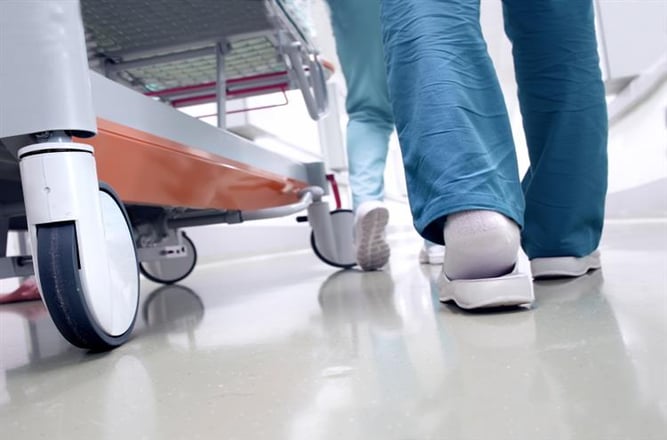
The elderly patient began vomiting blood early that morning. You arrive on the scene and are rushed inside by the woman’s daughter, who quickly fills you in on the patient’s history–late-stage esophageal cancer. The woman is sitting up in bed, alert and clearly frightened, with bright red blood staining her chin and chest. She is gasping for breath as you quickly set up your equipment, but when you turn on the portable suction unit, nothing happens. You exchange frantic glances with your partner and scramble for a Plan B.
When you flip a power switch and get no response, that usually indicates a lack of power. But today’s modern portable suction units rely on various types of power sources, so your remedy will depend on the model. Most rely on batteries, either rechargeable or alkaline, so the first thing to suspect is dead batteries when your unit fails to turn on.
Equipment failures on emergency medical scenes can make bad situations much worse. And no failure can be more calamitous than those involving your suction unit. Let’s discuss some of the primary causes of portable suction unit failure and how to prevent them.
Prevent Battery Failure
The best way to prevent dead batteries on emergency scenes is to complete a thorough equipment checkout at the beginning of each shift.
Follow your portable suction unit’s manufacturer guidelines: if they recommend keeping your rechargeable unit plugged in while not in use, be sure to do so.
Turn on your unit to test the battery. If it fails to turn on, here are a few possible causes and remedies:
- Make sure the Molex connections (power connectors that connect the unit to its battery) are in place and tight.
- If the battery is completely discharged, recharge the unit.
- If the fuse to the power switch is blown, replace the fuse.
- If the battery or other internal components appear damaged, replace the battery or return it to the manufacturer.
Testing Your Batteries
It is a good idea to test your batteries whenever your batteries’ quality is in question. Be sure to check your manufacturer's guidelines. Here are the recommendations for SSCOR units:
- Confirm the power cord is supplying power to the device and check the power indicator light on the control panel.
- Remove the power cord.
- Turn the device on and check for vacuum by occluding the canister.
- Allow the unit to run for 15 minutes on DC power. If the unit stops or slows during the 15 minutes, or if the battery condition indicators begin to blink, it is possible the battery capacity has been depleted. It is time to replace the battery.
- If the unit is still running at full power after 15 minutes, turn the device off and put it back on charge.
- Reconnect the device to the charging source.
Other Reasons for Power Failure
Dead batteries or lack of charge are not the only causes of power failure for portable suction units. The unit itself must be clean and in good working order for it to function appropriately, so if you flip the switch and get inadequate vacuum, here are a few other potential causes:
- Check the suction canister. If it is not secure to the chassis, latch down the canister.
- Check the regulator vent. If it is open, or the variable regulator is at a very low setting, replace the cap on the vent or adjust the regulator.
- Be sure the tip cover is removed from the end of the catheter.
- If fluids have shut down the filter within the canister, replace the canister.
- If the canister is full, replace the canister before continuing.
An effective and reliable portable suction unit is crucial to emergency response, so be sure yours is ready and able to do the job.
Editor's Note: This blog was originally published in April 2023. It has been re-published with additional up to date content.
















